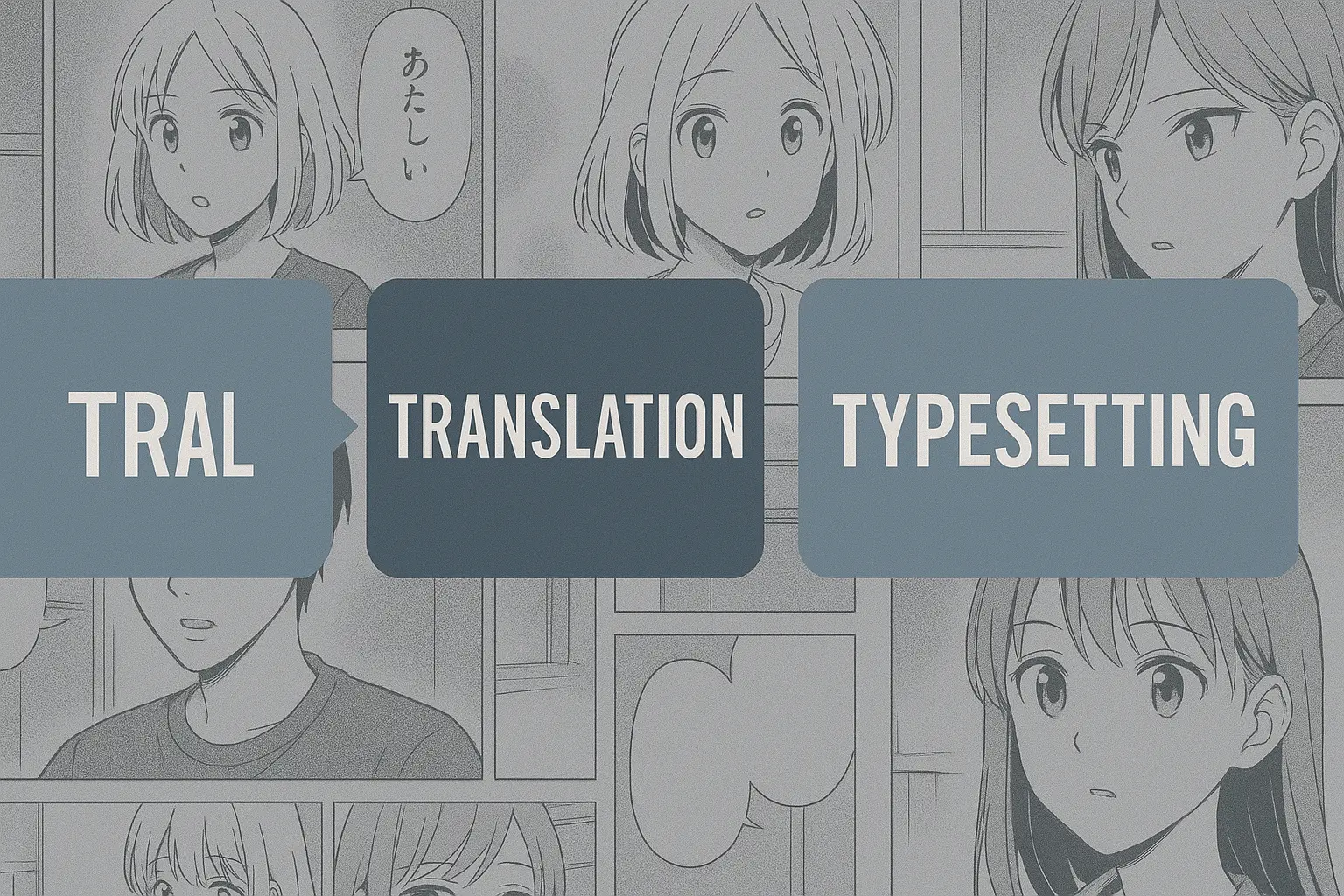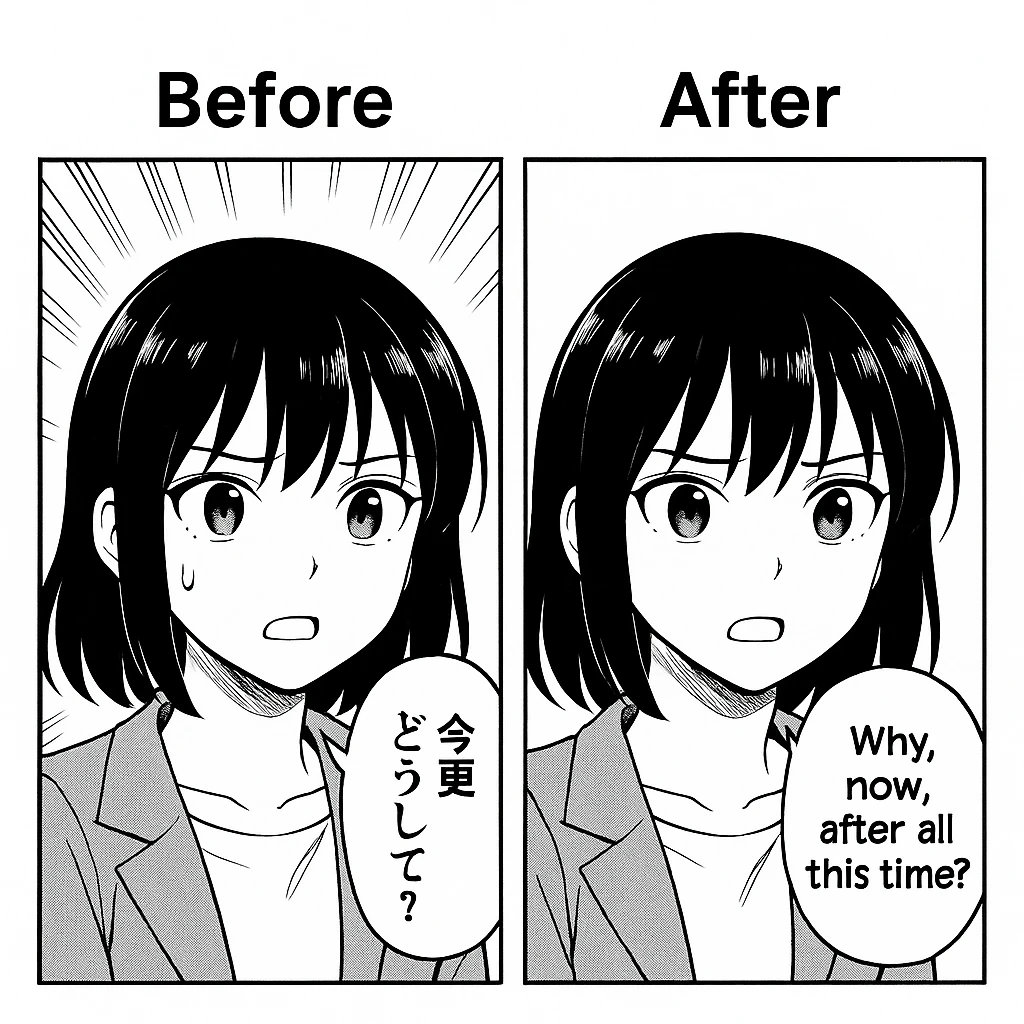The Ultimate Guide to AI Manga Translation (2025)

The Ultimate Guide to AI Manga Translation (2025)
Readers want speed without losing tone, flow, or page aesthetics. Modern AI manga translation finally delivers that balance: it recognizes text inside bubbles, renders a natural line in your language, and keeps the original layout intact. This guide focuses on the practical details—how to prepare pages, choose settings, and review only what matters—so AI manga translation becomes a habit, not a hassle.

What “good” looks like in 2025
A strong AI manga translation session preserves reading rhythm. Names remain consistent, honorifics appear where appropriate, and jokes land because the line length and wording fit the bubble. You should be able to skim a chapter, pause on emotional beats, and never feel the tool fighting the artwork. When setup is right, AI manga translation becomes invisible: the story takes the lead.
Core ingredients
- Clean input. High-resolution pages reduce OCR confusion, which improves AI manga translation quality more than any fancy prompt.
- Contextual translation. Page-level segments give the model enough context to keep tone and pronouns consistent during AI manga translation.
- Layout write-back. Smart typesetting recreates spacing and wraps lines to match the bubble geometry, a must for reliable AI manga translation.
The pipeline, simplified
At a high level, this is how a modern AI manga translation pipeline works:
- OCR & region detection. De-skew pages, find speech bubbles, and identify SFX or handwritten notes.
- Segment & translate. Keep speaker order and short-term memory so AI manga translation maintains tone across consecutive panels.
- Typeset & overlay. Wrap translated text back onto the page without erasing the art; good AI manga translation uses subtle stroke and gentle leading.

Quick start checklist
- Open a chapter and run AI manga translation per page rather than per bubble; this keeps context intact.
- Scan for “weighty” lines. Names, puns, and cliffhangers deserve a quick re-run; selective AI manga translation on a region saves time.
- Choose fonts wisely. Comic-friendly sans with 1–2px stroke reads naturally. A good font makes AI manga translation feel like native lettering.
- Keep a tiny glossary. Terms like team names or attacks should be pinned so AI manga translation stays consistent across volumes.
Layout and typography that read like print
Even perfect wording can look awkward if line breaks fall poorly. To make AI manga translation feel professional, aim for short lines, 1.2–1.3 line height, and consistent margins inside the bubble. Nudge long words to the next line instead of shrinking the entire paragraph; it preserves voice and pace. When bubbles are elliptical or tilted, rotate the text block slightly so the AI manga translation follows the bubble’s axis rather than fighting it.

Advanced tactics that save hours
- Batch then spot-fix. Run AI manga translation across a whole chapter, then fix only complex jokes or lore terms. Most pages will already read smoothly.
- Switch models strategically. Use a fast model for routine pages and a stronger model for historical dialogue or layered sarcasm; targeted AI manga translation beats a one-size approach.
- Respect SFX. If the sound effect carries meaning, translate near it in small caps; otherwise keep the art intact and let AI manga translation skip it.
- Zoom QA. A quick pass at 90–110% zoom reveals cramped lines and widows that make AI manga translation look mechanical.
Frequently asked questions
Is it accurate enough to enjoy a series? With clean scans and sensible settings, AI manga translation delivers a faithful read for the vast majority of panels. You’ll still want to touch key jokes or poetic lines, but day-to-day dialogue flows well.
Will it damage the artwork? No. Modern overlays are non-destructive, so AI manga translation leaves the source page intact and can be toggled off at any time.
What about names, honorifics, and tone? Create a tiny style note—Mr./Ms. vs. -san, profanity strength, and nicknames. When AI manga translation follows a short style note, the voice stays surprisingly stable.
Bottom line
Treat this like lettering, not just translation. Feed clean pages, keep context together, and polish the handful of lines that carry emotion. Done this way, AI manga translation turns late-night raws into a smooth, character-true experience—fast enough for weekly reading, refined enough to feel intentional. The less you notice AI manga translation, the more you’ll enjoy the story.
Want to get started right away? See AI manga translation 。